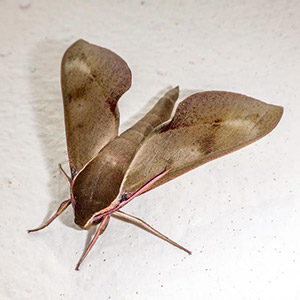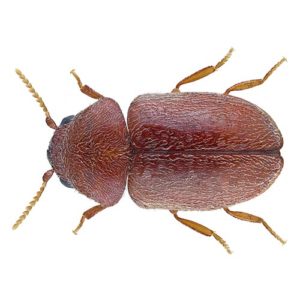Description
| Size | 16 mm wingspan |
| Characteristics | Up to one-third of front wing covered with copper or bronze scales. |
| Legs | 6 |
| Antennae | Yes |
| Wings | Yes |
| Habitat | Feeds on flour, whole wheat, cornmeal, and other stored food products. |
| Habits |
|
| Indian Meal Moths in the Pacific North West | Indian meal moths are a global pest that is known for infesting pantries all over the world. These moths famously feed on cornmeal made from Indian maize, hence their common name. Indian meal moths are easy to identify for their small size and characteristic bronze or copper coloration on the lower half of their wings. As larvae, these pests can consume large amounts of stored food products such as cereal, candy, or flour. In homes, Indian meal moths may also consume dried pet foods or birdseed. |
| Indian Meal Moths Habitat | Found on every continent except for Antarctica, Indian meal moths are one of the most common food-infesting pests. As larvae, these pests constantly feed on grain products, dried foods, and other stored goods. Indian meal moths often leave behind large amounts of silken webbing around their food sources. Since these pests prefer coarser grains to feed on, Indian meal moths are frequently found in packages of graham flour, cornmeal, and whole wheat. |
| Indian Meal Moths Behavior, Threats, and Dangers | Indian meal moths are not known to bite humans, and they do not pose any serious health risks. However, they can be a major nuisance if they enter your pantry and begin eating or spoiling your food. Adults will deposit their eggs onto stored food products such as cereal, grains, or crackers. Once hatched, the larvae will consume the food and may leave behind silken webbing. Since the adults do not eat, they often fly into distant rooms of the house, which may cause homeowners to mistake them for clothing pests. If you see evidence of Indian meal moths in your home, contact your local exterminators to remove these pests quickly and efficiently. |


